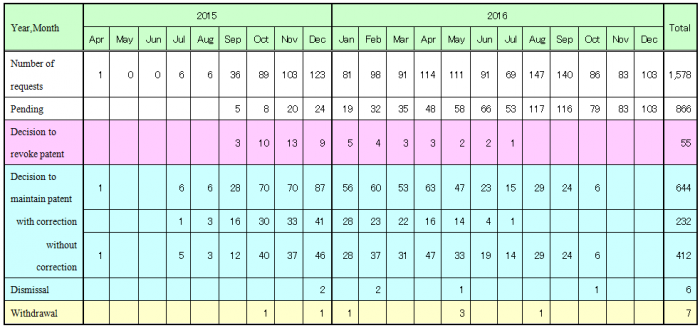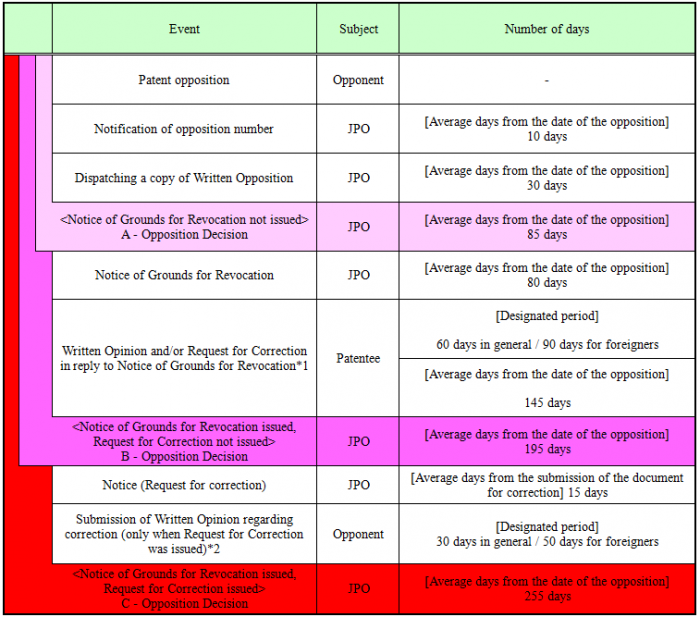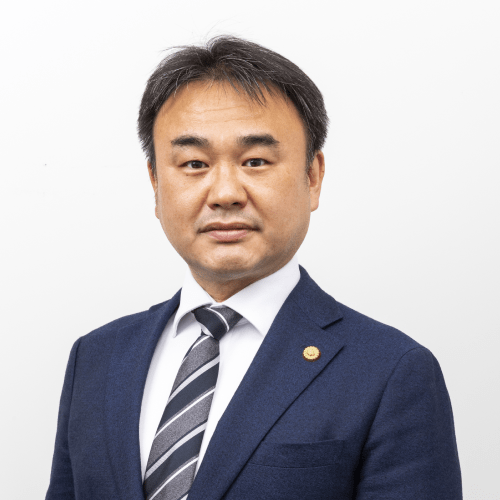2017.06.19
Report on patent opposition system
PATENT
Report on patent opposition system
Two years has passed since the patent opposition system began on April 1, 2015. It hasn’t been long since the enforcement, and thus there seem to be many who are not able to determine how to handle the patent opposition system in IP strategy.
Under this circumstance, the Japan Patent Office (JPO) announced in February 2017 the current status of the patent opposition (*1).
The followings are our report focusing mainly on:
(1) Status of utilization of the patent opposition system;
(2) Status of revocation due to patent opposition; and
(3) Schedule up to the opposition decision,
based on the data announced by the JPO and the data of trial schedule in the actual opposition cases we have extracted.
First, please refer to the data regarding the current status of the use of patent opposition (*1).

Approximately 1,600 opposition cases have been filed in 21 months by December 2016 and since around October 2015, an average number of the cases has settled at approximately 100 a month.
Based on the data appearing in Table 1, the number of opposition cases to which the decisions were issued by the end of December 2016 is 712 (including 6 dismissal cases and 7 withdrawal cases), and among these, the number of cases which were determined to be revoked by the end of December 2016 is 55. In other words, of the cases that were opposed, 7.7% were revoked. However, at that time, 866 cases were pending, and thus it is necessary to continue watching how this figure will change.
In this connection, the number of requests for patent invalidation trial in 2015 as the first year of the patent opposition system was over 200, and the rate of establishing the request (patent invalidity rate) in that year was approximately 18% (*2). In view of this, it is considered that the patent opposition system has not been utilized at present than expected and the rate of decision to revoke patent is considerably low.
In the status report by the JPO (*1), the number of oppositions for each section of the IPC classification is also disclosed, in which the number is highest (481 cases) in section C (Chemistry, Metallurgy), and the rest follows in the order of section A (Human necessities; 304 cases), section B (Performing Operations, Transporting; 264 cases), and section H (Electricity; 210). Regarding the number of applications for each section, for example, the number is much larger in section H than in section A, and thus the ranking of the number of opposition cases in each section does not seem to relate to the ranking of the number of applications in each section.
Second, Table 2 shows an average schedule from a patent opposition to an opposition decision. The present data was obtained by extracting over 1,500 actual patent opposition cases, performing some filtering, and then averaging them.
Regarding the opposition decision, the following three cases are separately treated and the average was calculated: case (A) - Notice of Grounds for Revocation was not issued; case (B) - Notice of Grounds for Revocation was issued but Request for Correction was not issued; and case (C) - Notice of Grounds for Revocation was issued and Request for Correction was issued. Since the number of days from the date of the opposition are completely different in these cases (A) - (C), an average was calculated for each case. In contrast, regarding the events other than the opposition decision, the averages relative to the entire cases were calculated irrespective of the cases (A) - (C).
In addition, because the number of samples for which the Notice of Request for Correction was issued was small, no calculation was made with respect to the averages of the timing of the issuance of this notice, and the averages of timing of the submission of the written opinion in reply thereto.

Only after an opposed party receives a Notice of Opposition Number, the opposed party finds out that an opposition was filed, and when receives a copy of a Written Opposition later, actually knows the contents of the opposition. It will take approximately three weeks to receive the copy of the Written Opposition after the receipt of the Notice of Opposition Number.
A Notice of Grounds for Revocation will be sent approximately three months after the opposition. However, there are some cases where an Opposition Decision (decision to maintain patent) is issued without the issuance of the Notice of Grounds for revocation. Accordingly, even though the opposition is notified, it is not necessary to immediately review the case based on the contents of the copy of the Written Opposition, and it is sufficient to start reviewing the case after the Notice of Grounds for Revocation is notified.
We have also compared the schedules of some opposition cases we have actually handled and the schedule data in [Table 2], and found that they are generally similar. However, please note that the events and procedures are different depending on the case, and thus the schedule may be different to a large extent from the schedule data shown in [Table 2].
(*2) the Japan Patent Office HP “Patent administrative annual report 2016”
